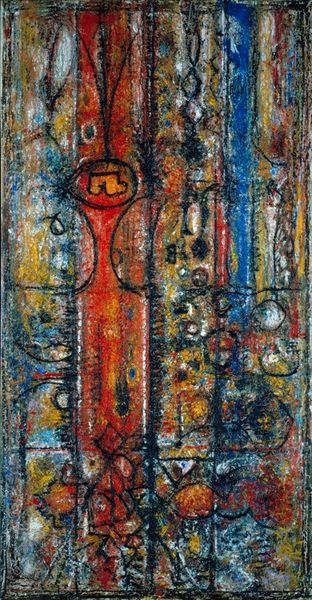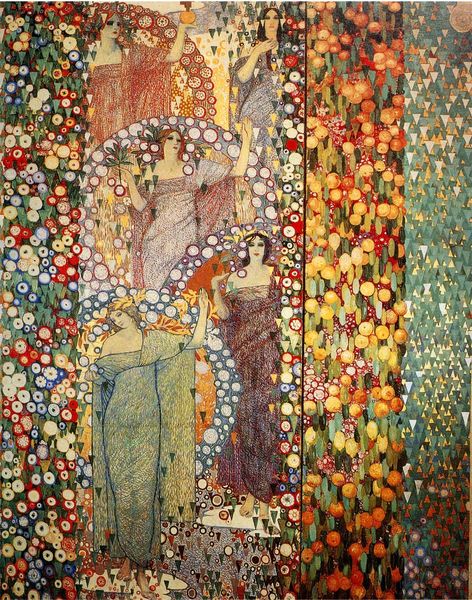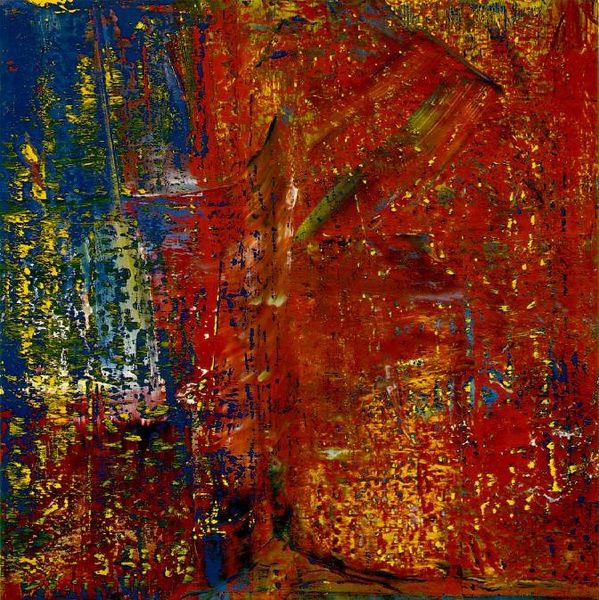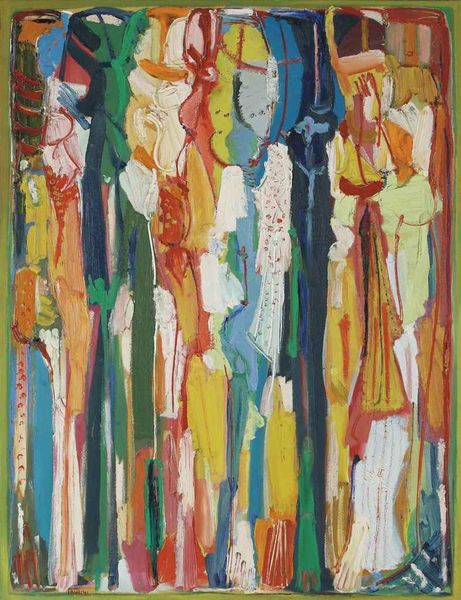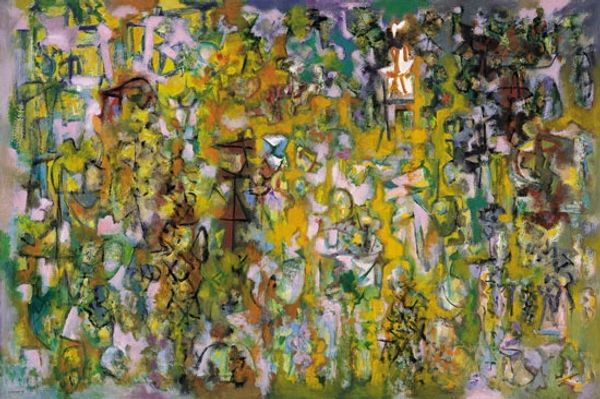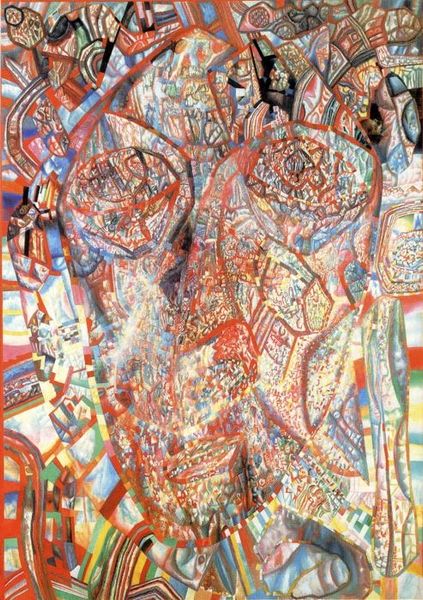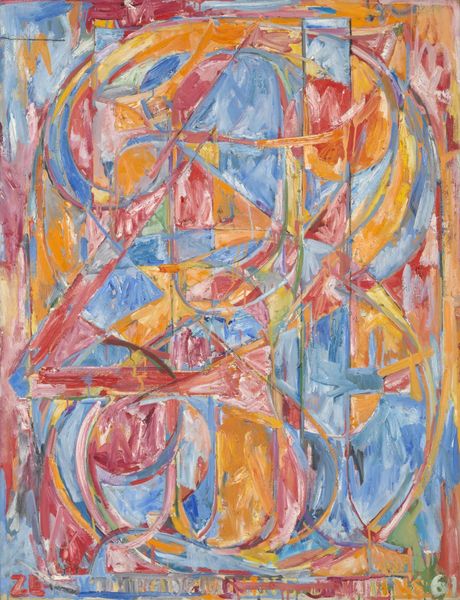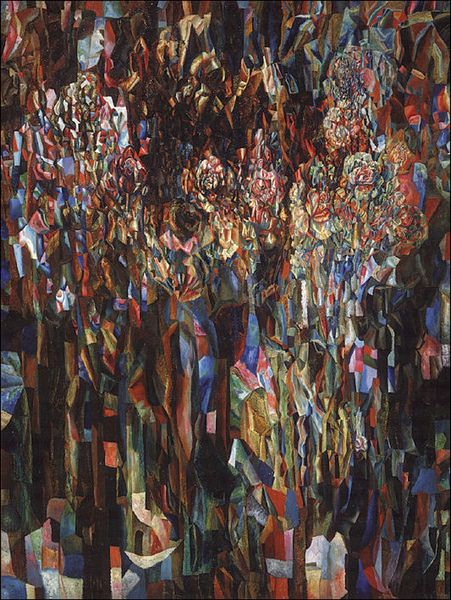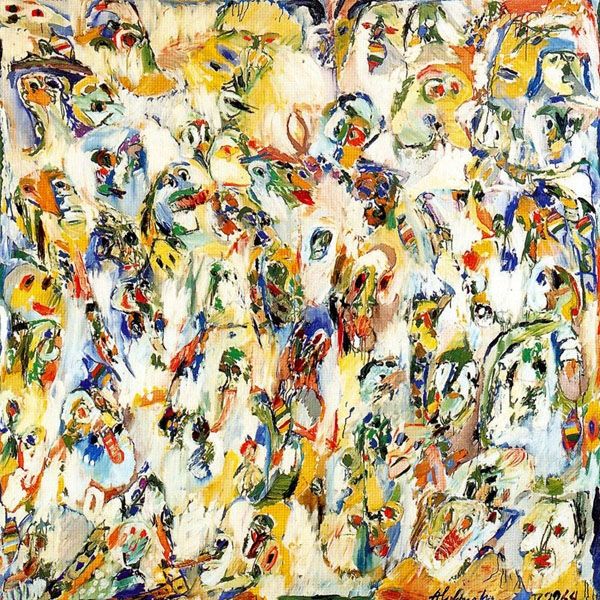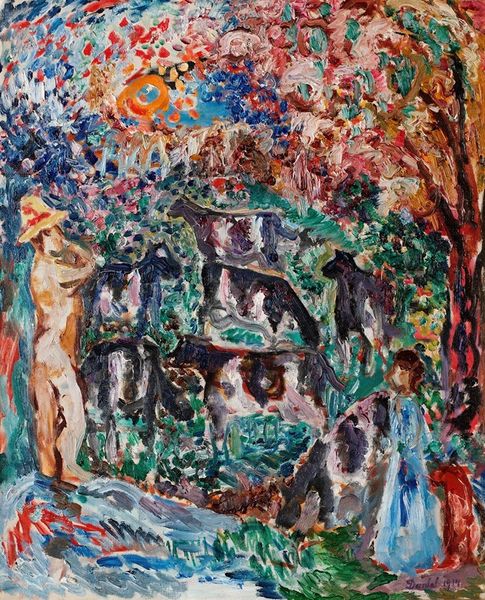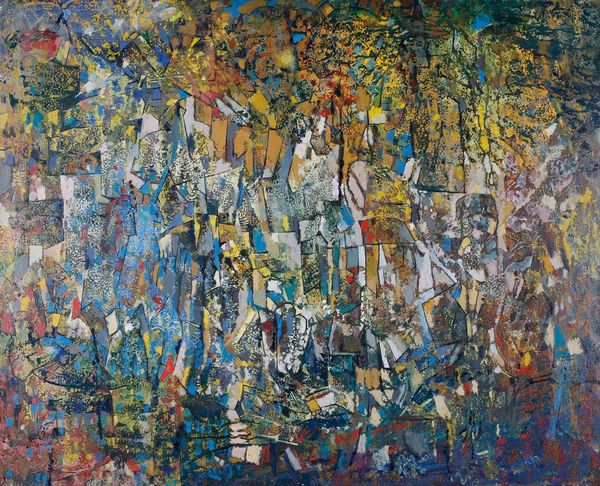
Copyright: Richard Pousette-Dart,Fair Use
Editor: This is "Blood Wedding" by Richard Pousette-Dart, painted in 1958. It’s an oil on canvas and really commands attention. I'm initially struck by how the different colours seems to fight for space and attention; it is quite aggressive. What are your impressions of this work? Curator: Well, looking at this piece through a materialist lens, it is interesting to consider the physical process. We should reflect on the fact that Pousette-Dart layered these colours. Oil paint becomes a raw substance here; observe how this materiality is manipulated. What do you notice about the artist’s physical involvement? Editor: I can see layers and textures that must have been very deliberate. He really built up the surface, adding, scraping, and adding again. How might the "New York School" context shaped this approach to materials? Curator: Think about the post-war period. There was an influx of cheap art supplies into New York, especially lower quality canvases and paint, because resources were needed for the war. Many of these artists had little funds to make art with and what was made became important as a means to express new perspectives. Also consider that this work directly engages the marketplace. Oil paint in itself speaks to a tradition of wealth and art; so, with these bold gestures he critiques existing traditions and makes use of the new availability and the expansion of artistic practice. Do you notice any other aspects that relate to the consumption or the means of making in “Blood Wedding?" Editor: I hadn't thought about it that way, but the visible layers and reworking make sense. He embraces the materiality and exposes the labor in ways more refined, academic painting doesn’t. The sheer energy in the paint application emphasizes that art is not divine inspiration; it is WORK. It's a really interesting intersection of process, materiality, and a shifting artistic landscape. Thanks for opening my eyes to it! Curator: Absolutely! Thinking about art through a materialist perspective enriches our understanding, doesn’t it? It offers critical perspectives on creation and consumption.
Comments
No comments
Be the first to comment and join the conversation on the ultimate creative platform.
